Even before having used an Apple Watch, Daniel Breslan is pretty sure how people will use his app, Departure Board, on one. “When you’re waiting in a station cafe, pub, lounge, you have you own personal departure board and you do not have to move to keep checking the screens on the platform,” he explains. His new app, which is in the final stages of testing, is a simple concept: it finds the nearest rail station to you, and tells you the destination and time of the next 20 trains - though on a watchface, you’ll probably only see three or four without scrolling.
The Guardian’s product and service reviews are independent and are in no way influenced by any advertiser or commercial initiative. We will earn a commission from the retailer if you buy something through an affiliate link. Learn more.
Breslan is one of the many iPhone app developers who are hoping for a new bonanza when the Apple Watch hits the stores, and shortly afterwards the streets, in April. When Apple introduced the iPhone App Store in July 2008, it created an explosion of sales; even though Apple wasn’t first with an app store (Nokia and Palm had notably preceded it), the rapid growth of the smartphone market and the visibility of the iPhone guaranteed eager buyers – and, for some developers, sudden wealth.
Now the impending arrival of the Apple Watch has driven a whole new round of app development, of which Breslan’s is only one. It’s effective on an iPhone (I’ve been testing it since January) but Breslan sees its potential being even greater on a smartwatch, because you wouldn’t have to unlock your phone and navigate to the app to get the information.
As a user of the Pebble smartwatch, which still holds the record for the biggest Kickstarter at over $10m in 2012 and has so far sold a million, Breslan reckons that “the ideal use case for apps on a watch are small utilities that facilitate your daily life”. He uses his Pebble to control podcast playback, read messages, screen calls, check train times “and time my Aeropress brews”. All, he points out, are “little tasks that I can complete without having to pull out and hold my phone.” He thinks the Apple Watch will magnify those benefits through its extra experience in interface design.
David Smith, another iPhone developer based in Herndon, Virginia who has written recipe and audiobook apps, reckons that by shifting interactions from your phone to your wrist, the Apple Watch will “create a much more fluid daily experience, with dozens of micro-interactions rather than the longer ones we have today”.
For what, though? “Sending a text message, checking your next appointment, adding a reminder [to a list], suddenly [creating] a much lower barrier to action,” Smith says. “I think I’ll grow to rely on my watch for keeping me on track throughout my day.”
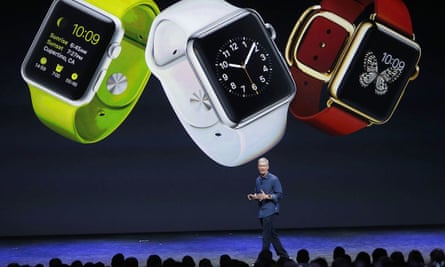
With the formal unveiling of the Apple Watch now only weeks away (probably in March, given that chief executive Tim Cook said it would ship in April), Apple is reportedly working closely with some developers to finalise and test their apps, even inviting a few to its Cupertino headquarters for in-situ tests.
With reports that the company has ordered five million for its first run, probably covering sales for one quarter, the chance to create a hit app for those precious square inches of wrist space looks ever more tantalising. Some analysts reckon Apple’s Watch could sell 1m in its first weekend on sale, and 20m by the end of 2015. Watch-app downloads will probably run in tandem. Goldrushes like that don’t come often.
So what does a hit wrist-app look like? Try asking those writing for Google’s Android Wear platform. Data released by Canalys, and underscored by download data for the Android Wear app from the Google Play Store, says that 720,000 Android Wear devices, almost all smartwatches, were shipped in 2014.
Among the most popular Android Wear apps on the Google Play store are watch faces – there are dozens – and a simple calculator written by Wearable Software, a four-strong team based in Karlsruhe, Germany. Cedric Larrat, its founder, told me there have been over 357,000 downloads of the company’s Android Wear apps, of which 260,000 have put it on their smartwatch, while the calculator has had 170,000 downloads, of which 120,000 were installed. (He can’t track whether they’re still using it, though.) “I believe that the right time has come now to establish smartwatches on the market. In the past this has been tried, but the technology wasn’t advanced enough. [The arrival of] Bluetooth 4.0 [with its low energy demands], better and smaller batteries, as well as microelectronics, make it possible now.”
On a less grand scale, there’s Mini Dialer, which lets you dial a phone number via your smartwatch. Written by Lonnie Johnson, who lives in Phoenix, Arizona, it costs £1.27 ($1.99) and has had about 9,000 downloads – a good earner for something you might expect a smartwatch connected to a phone to do anyway.
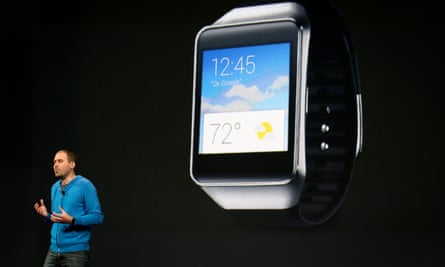
Limitations
Initially, Apple is limiting apps for its watch; they won’t run on the device itself, but on the owner’s phone, connected via Bluetooth. (Developers expect this to change with future Watch software and hardware.) Apple’s own page suggests uses are “timekeeping”, “new ways to connect” and “health and fitness”. The first and last have been staples of wearables for some time; it’s the middle one that developers hope to capitalise on. Apple has hinted at the possibilities with its system for sending the wearer’s heartbeat, or little pictograms drawn onscreen, to another Watch wearer.
Breslan says designing for a tiny screen was “a daunting task” at first. However, “for the first release of watch apps, Apple has provided a very small library of controls that can be used to build app interfaces. This places a limit on the complexity and content of watch app user interfaces, which makes the job somewhat easier. Translating my phone application to a tiny screen whie maintaining the intuitive simplicity that I strive for is the most challenging part of watch-app development for me currently.” His Pebble experience – including installing apps such as Evernote, Foursquare’s Swarm and Twitter clients on it– has persuaded him that “a watch is not a sensible device to use when interacting with such complex applications”.
He warns that apps with complex interfaces on the watch itself “will sit unused”, though the digital crown – a button on the side of the watch that can bring different apps to prominence – and the touchscreen “may ease this slightly”.
But the Watch might even usher in new interfaces – as Howard Gutowitz and Dimitrios Hechagias, the duo behind an app called Lunate, hope.Named after a crescent-shaped bone in the wrist, Lunate is a keyboard designed for a watch face, but instead of a square array of keys, it arranges the letters around the face, between which the user swipes, while a T9-style prediction system produces words.
“We’re solving a problem with [the] Apple Watch that people don’t yet realise they will have,” Lunate’s inventor Gutowitz, 57, explains. But its implementation must wait for ‘WatchKit’ that will allow apps to run on the watch itself– which he thinks might come this summer – or else port it to Android. “There’s a lot of scepticism that the Apple Watch will even happen in a big way, or whether the use cases will be particularly compelling,” says Gutowitz. “And even if they are, will they involve input as opposed to getting notifications?” He likens the forthcoming release to the first iPhone in 2007, which didn’t have 3G, couldn’t shoot video, and couldn’t forward MMS: “[It is] very, very limited in what you can do,” he says, “unless you’re Apple or one of its ‘partners’ – those with access to [a] real, full-featured WatchKit.”
Smith thinks the most successful apps will change our focus, “like the shift we saw moving from [desktop] Mac to [mobile] iPhone. For better or worse having an iPhone in your pocket means that you are never really out of touch. At any moment you can pick up your phone and find something out or have someone reach out to you. Putting that on to your wrist means that you have that same capability but now without any hurdle to overcome. I’m expecting it will take quite some time to get used this mode and to find the happy medium between being overly connected and usefully connected.”
He envisages two sorts of third-party apps rising to prominence: “informational” and “emotional”. He explains: “‘Informational’ services provide you with up-to-the-minute information – things like stock data, news, weather alerts. Bringing these within arm’s reach allows for you to never miss something you want to be informed of.
“‘Emotional’ services let you connect with those you love. While some of that might come from things like messaging, I think things that will let you share what you are doing and see what those you care about are up to would be great. I look forward to having little glances into what my kids are up to each day appear on my wrist throughout the day.”
How long will the battery last?
That though raises the biggest question about smartwatches, and particularly the Apple Watch: how long will the battery last, and is that enough? Mark Gurman, who runs the 9to5Mac site and has a solid record with advance scoops on Apple products such as HealthKit, says the Watch is expected to get 19 hours of combined active and passive use, and perhaps two or three days in standby or low-power mode – but will almost surely need recharging every night.
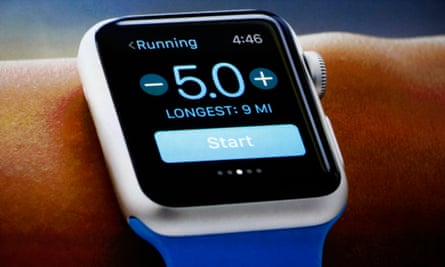
Is that enough? “The thing Apple has in its favour is the positive reinforcement cycle driven by the device’s usefulness,” says Smith. “The more I use it, find it useful and make it part of my life ... the less likely I am to be annoyed that I have to charge it. Obviously there is a limit to that, but so long as the device can make the hassle of charging it balance out with its utility I think things will be fine.”
Daniel Breslan is less sure: “I’m a power user who rises early, works hard and retires late, so if anyone will get stung for battery life shortages, it will be me.”
Hechagias, the writer of Lunate, adds, “Apple maintaincomplete control until they are sure the experience comes out as they wish, and then they relax control as much as needed in order to monetize. So perhaps the battery issue is one aspect that is making them think ‘we will not let anyone make the watch look bad by doing things that might drain the battery and make us look bad’, and only allow such things when the watch is already accepted. In any case, Lunate would not be a power drain, it uses little CPU & GPU, especially compared to such things as games.
“But it might also be as simple as a matter of trying to enforce their current philosophy. Similar to how they would not release a large iPhone or a small iPad because “people did not want it”, until they decided it is the next best thing.”
What will happen to Android Wear?
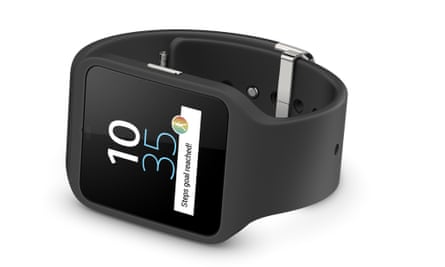
The other big question is: will the Apple Watch sweep away Android Wear, or help it? On this, there’s unanimity. Johnson, Mini Dialer’s author, thinks it will help Android Wear sales, “since it will increase the awareness and interest of users as they discover the capabilities that wearables provide”.
Larrat agrees that the Apple Watch will provide a rising tide to float boats on other platforms: “[S]martwatches will become more attractive, and Apple is a specialist in marketing.”
Russell Ivanovic, of the Australian app company Shifty Jelly, is an enthusiastic backer of Android Wear, which he says is “a far superior platform to the Apple Watch. It processes things locally, it has an always-on screen”– though not all Android Wear watches have their screens illuminated – “and the concept of Google Now-style cards on a watch just works. There are already watches that can track your runs via GPS without needing to be tethered to your phone, something the Apple watch won’t be able to do.”
Even so, Ivanovic says: “The Apple watch will be more successful, chiefly because it’s made and marketed by Apple. People will find the smallest details and point to them as to why the Apple watch was more successful, but at the end of the day it will come down to the simple fact that Apple is better at launching products. They know how to build up anticipation for a product. They know how to limit supply of said product when it’s first available. They know how to market their product in such a way as to make it a ‘must have’.
“Basically, they [Apple] are a product company at heart. Google seems to me like an engineering driven company that hasn’t yet learnt how to coordinate everyone to launch a product well.”
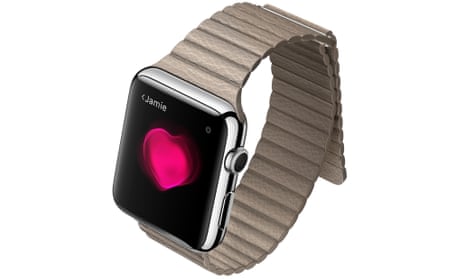
Comments (…)
Sign in or create your Guardian account to join the discussion